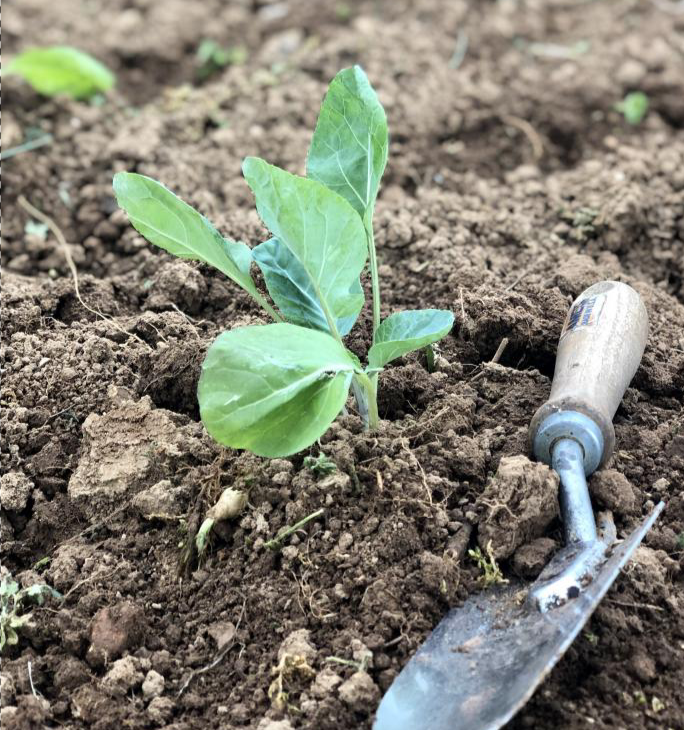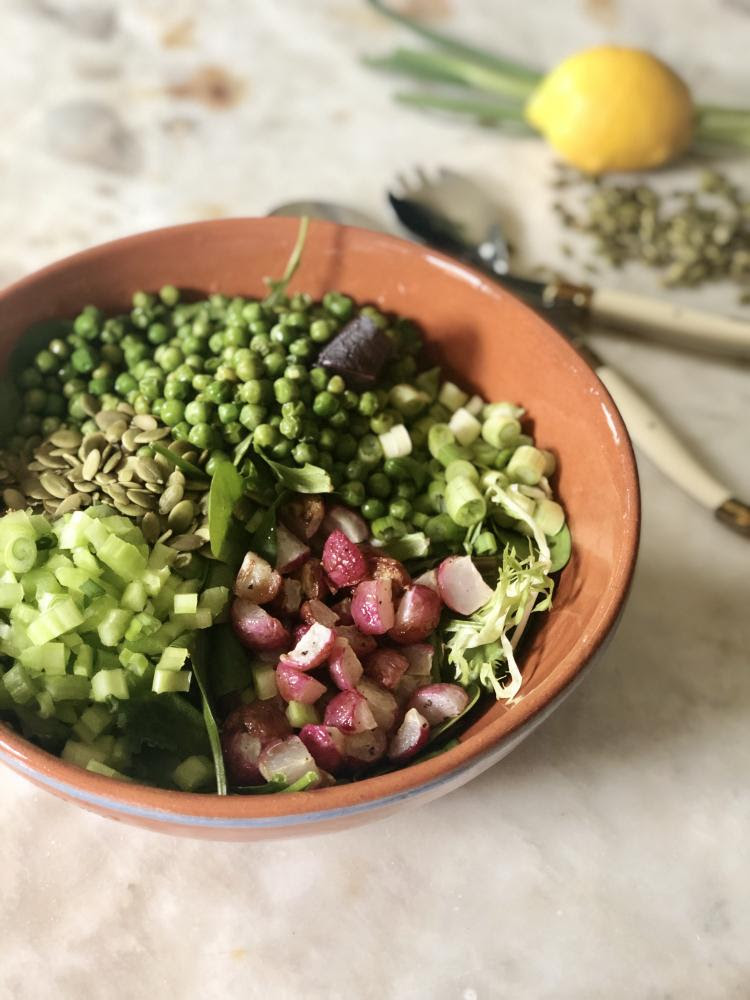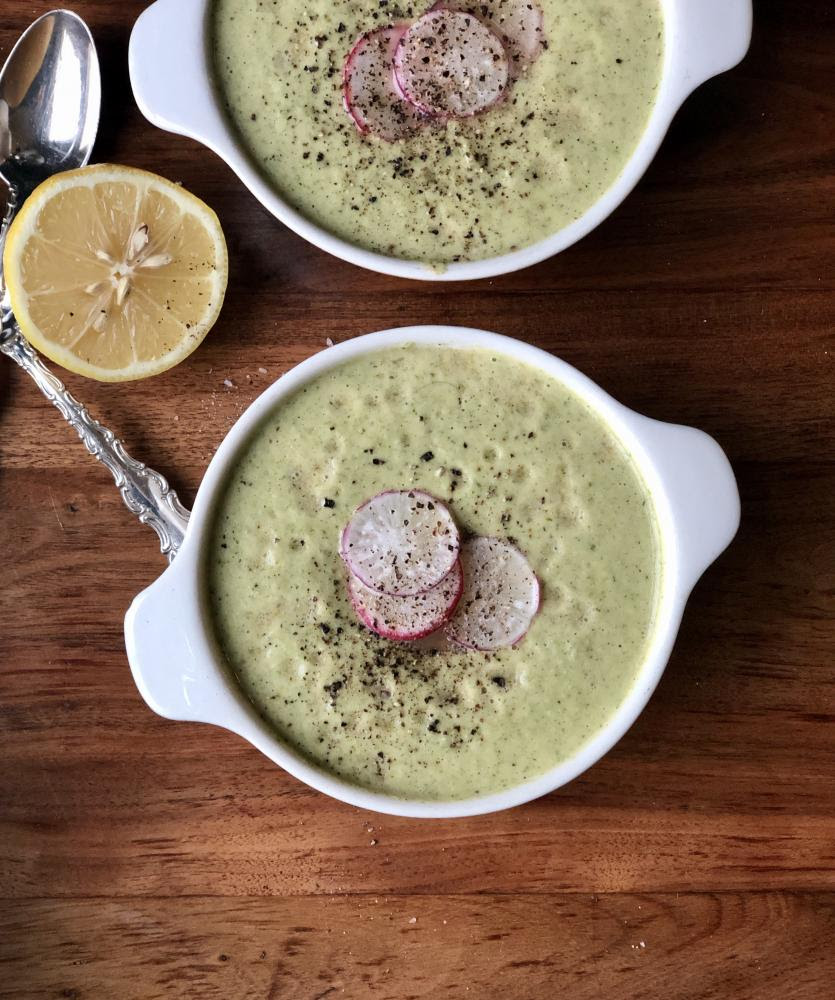Growing Nutrition
Happy garden month! April is a great time to gather your vegetable seeds, till up some dirt, and start growing your own health! Whether you choose to start a large vegetable garden, a kitchen garden, or keep it simple with container gardening, each can provide many health benefits. Gardening has been associated with improved mood, stress reduction, improved cognitive function, and weight loss. It gives you a chance to get outdoors, engage in physical activity, and of course, eat what you grow!
The way we plan, purchase, and obtain our food has been greatly influenced these past few weeks due to COVID-19. This is a special time to begin gardening and growing some of our own foods. It can provide a much needed new activity and better nutrition for a healthy immune system, while also helping to lift your mood and reduce anxiety.

Gardening for Health
Gardening has been shown to have immediate benefits on health, such as improvements in depression and anxiety symptoms, as well as a longer-term influence such as life satisfaction. Research also shows that gardening during childhood is associated with a greater intake of vegetables and fruits later in life. Gardening may also impact the health of more than just the gardener. It can affect the health of the gardener’s family and friends. Gardeners often share their yield and encourage others to begin gardening as well!
Gardening provides the opportunity to eat healthy, exercise, and engage in mental activity – all important factors in preventing cognitive decline. Research shows daily gardening reduces the risk for dementia.
Tending to a garden is a great option for adding physical activity through aerobic and muscular exercise to your routine. Gardening as a low-to-moderate physical activity has been shown to improve high-density lipoprotein level, decrease blood pressure, and reduce inflammation. It has also been shown to significantly lower acute health complaints and physical restraints.
Research shows that having your own garden encourages you to eat more fresh vegetables and fruits regularly. Produce right out of your own garden provides freshness, flavor, and convenience to your diet. One becomes prideful of their garden, which can lend itself to overall healthier eating. The dietary advantages of access to garden produce may also lend to a healthier BMI and decrease in weight.
Enjoy your own homegrown produce to reduce your risk of cancer, cognitive decline, cardiovascular disease, and micronutrient deficiencies.
Spring Planters
Broccoli
Broccoli is a good source of vitamin C, vitamin A, potassium, and fiber. This cruciferous vegetable also offers anti-carcinogenic and chemoprotective properties.
IN THE GARDEN:
Get creative in the garden by growing broccolini, a cross between broccoli and Chinese kale or broccoflower, a cross between broccoli and cauliflower.
IN THE KITCHEN:
Don’t forget to eat the broccoli stalks too! Thinly shave the outside of the stalk to find a deliciously tender snack you can enjoy raw or cooked.
Cabbage
Cabbage is packed with vitamin C, provides polyphenols, and is antioxidant rich. Red cabbage has been found to have higher vitamin C and phenolic content than other varieties of cabbage.
IN THE GARDEN:
Try growing red or purple cabbage in your garden. Or try a different variety such as napa cabbage or Chinese cabbage.
IN THE KITCHEN:
Add cabbage to homemade slaw, make kimchi, or ferment your own sauerkraut.
Spinach
Spinach has a good amount of vitamin A, folate, iron, and fiber. And its antioxidant content has been shown to reduce oxidative stress.
IN THE GARDEN:
Plant a variety of spinach leaves. Plant smooth leaves, savoy curly dark green leaves, and semi-savoy leaves. Prefer baby spinach? By growing your own spinach, you have the chance to pick your leaves sooner for baby spinach, or wait and enjoy larger more mature leaves.
IN THE KITCHEN:
Spinach can be added to many dishes near the end of cooking. Try adding it to your soups, pastas, scrambled eggs, or smoothies.
|
Ready to start planting? Check out UT Extension’s Tennessee Home Vegetable Garden Calendar. |
This month, I invite you to a new nutrition challenge!
APRIL FEEDING WELLNESS CHALLENGE
Grow something edible!
This can be an entire vegetable garden or an herb grown in a small pot in your kitchen windowsill. Just put your green thumb to work in the kitchen!

Spring Quiche
Ingredients:
2 tsp olive oil
1 cup spinach, chopped
1 bunch green onions, chopped
1 cup broccoli florets, finely chopped
8 eggs
2 Tbs fresh thyme leaves
1 Tbs dijon mustard
1/2 cup goat cheese
1/2 tsp salt
1/2 tsp pepper
Directions:
Preheat oven to 375 degrees. Heat olive oil in a skillet over low-medium heat. Add spinach, green onions, and broccoli to skillet and sauté for 5 minutes. In a large bowl, whisk eggs. Whisk in thyme leaves, dijon mustard, goat cheese, salt, and pepper. Stir in sautéed broccoli mixture. Pour mixture into pie plate and bake for 40-45 minutes.

Roasted Radish and Spring Pea Salad
Ingredients:
1 bunch radishes
2 tsp avocado oil
10 oz fresh English peas
3 celery stalks, finely chopped
3 green onions, finely chopped
4-6 oz spring mix spinach blend
1/4 cup pumpkin seeds
Dressing:
2 Tbs extra virgin olive oil
Juice from one lemon
Sea salt and pepper to taste
Directions:
Preheat oven to 425. Place parchment paper on baking sheet. Trim the ends off radishes and quarter. In a bowl, toss quartered radishes with avocado oil. Spread radishes on covered baking sheet. Bake for 20 minutes. While radishes are roasting, steam peas for 4-5 minutes until tender. Prepare dressing by whisking olive oil, lemon juice, salt, and pepper in a small bowl.
Place spring spinach mix in a large bowl and top with roasted radishes, steamed peas, celery, green onions, and pumpkin seeds. Drizzle with dressing.

Roasted Broccoli and Peanut Soup
Ingredients:
2 Tbs olive oil
1 12 oz bag broccoli florets
1 onion, peeled and chopped
3 cloves garlic, peeled and left whole
1 cup peanuts
2-3 cups vegetable stock
Salt and pepper to taste
1 lemon, sliced in half
Directions:
Lightly grease baking sheet with olive oil. Preheat oven to 350 degrees. Spread broccoli florets, onion, and garlic cloves evenly out on baking sheet. Bake for 20 minutes. Remove pan from oven and sprinkle peanuts on pan with other ingredients. Place pan with all ingredients back into oven for additional 10 minutes. Meanwhile, heat broth in saucepan over medium heat. Remove pan from oven and place roasted broccoli, onion, garlic, and peanuts into blender. Pour in vegetable stock, 1 cup at a time, and blend until smooth. Add remaining broth until desired thickness reached. Taste, season with salt and pepper if desired. Pour into individual bowls. Before serving, squeeze a few drops of lemon juice over soup and add additional salt and pepper as needed before serving.
Garden vegetables such as broccoli, cauliflower, and kale offer many health benefits contributed to a sulfur-rich compound known as glucoraphanin. For an extra boost of this powerful compound, consider OncoDetox which provides glucoraphanin from the concentrated source of broccoli seeds.
Check out Creating Health™‘s April Deal!
Creating Health’s OncoDetox Products are 10% OFF for the remainder of the month.
| Please speak with your doctor or medical provider before taking any supplement. |

Aubrey Moore is a registered dietitian. She specializes in functional nutrition, providing individualized personal guidance that focuses on whole food as medicine.
